Life in a Sami Village: Herding Reindeer in Norway
Since Christmas just passed, I thought it would be seasonally appropriate to write a post on one of the most surreal experiences I had in Norway – visiting Sami reindeer herders in their traditional Sami village.
Yes, reindeer husbandry is a real way of life for the indigenous Sami of Scandinavia. It makes sense as the natural pastures for reindeer are high up in the otherwise inhospitable Arctic tundra, so their grazing areas tend to overlap with Sami areas.
Disclaimer: Lose the Map contains affiliate links and is a member of Amazon Services LLC Associates Program. If you make a purchase through an affiliate link, I receive a small commission at no extra cost to you.
If you ever find yourself above the Arctic Circle, I highly recommend visiting a Sami reindeer ranch. You can feed the reindeer yourself in a stunning winter landscape, discover a lot about these beautiful animals, and also learn about the only indigenous people of northern Europe – the Sami.
Who Are the Sami (or Sámi)?
Native to northern Scandinavia, recognized as the oldest indigenous peoples of the North, the Sami people live in four countries. They reside in Norway (pop 50-65,000), Sweden (pop. 20-40,000), Finland (8,000), and the Kola Peninsula of Russia (2,000), with the majority of them living in the first two nations.
They speak their own Sami languages, closely related to Finnish and Hungarian rather than Norwegian or Sweden. They also have their own Sami culture.
The Sami in northern Norway are ethnically and genetically distinct from other Norwegians. They’ve actually faced a lot of discrimination within Norway in the past.
Outsiders may find it hard to distinguish the physical traits of Sami from the physical traits of other Norwegians. However, the few Sami I met explained that their Sami appearance, in addition to their name, marked them as different in Norwegian society.
Want to read this post later? Pin below to save or share!
Though the Sami are known for reindeer husbandry nowadays in Norway, only about 10% of them make their living this way. Traditional Sami culture emphasizes fishing and hunting. Today many Sami families, even many of those who still make a traditional living, have moved into towns and cities.
But because reindeer are beautiful and get Santa around and all, we’re going to talk about them first.
How Did Reindeer Herding Start?
Up until the 17th century, the Sami mostly relied on wild reindeer for hunting and pelts. They only kept a few tame reindeer on their farms, and put them to work as draft animals.
However, when the areas the Sami lived in started fighting to establish nationhood, each of the four regions wanted the Sami on their side to increase their population. As the Sami didn’t have much say while they were being fought over, they ended up double and even triple taxed by the newly formed countries.
Since they didn’t have cash to pay their taxes, they paid them in reindeer meat and pelts. This led the Sami to realize they would need a much bigger herd to meet their (unfair) obligations. So they started domesticating Norwegian reindeer in this part of the country and turned to reindeer husbandry as a way of life.
Reindeer in Norway (Become Food)
The Sami who herd reindeer make most of their money through selling reindeer meat. For those of you who are beyond disgusted by the thought of Rudolph in a soup, or think this all sounds awful and unhealthy (hello LA audience!), you should know reindeer is actually better for you than red meat.
Plus, the large herds are all free-range and treated very well during their approximately 15 years of life. So, this really is a best-case scenario meat origin story.
In fact, reindeer meat is used in quite a few dishes in the Arctic Circle, as it is one of the few good sources of protein in an otherwise sparse land. For those of you wondering, it tastes quite good. A bit gamey thanks to its 2% fat content, and then it just kinda sits in your stomach indefinitely. But the flavor is worth it, at least once.
One traditional dish is called bidos, a stew made of reindeer meat, potatoes, carrots, and reindeer heart. The Sami sometimes eat it at their traditional youth confirmation ceremony at age 14. Yes, I ate it. No, I was not aware there was a heart in it beforehand. Still tasted delicious.
You Can Feed Reindeer Outside Tromsø, Norway
The Tromso Arctic Reindeer experience lets a small group of visitors go to a Sami village reindeer farm to learn about Sami culture, spend time with Sami reindeer, and even help feed the reindeer themselves.
Reindeer on the farm are neither hostile nor affectionate. If you have food in your hand, they come to you, and the second they realize the food is gone, you are invisible to them. But keep an eye on how close your body is to the food bucket when feeding reindeer. No one wants to be accidentally impaled with a four-foot-long antler on their Arctic getaway.
The Sami Use Reindeer For Their Lives and Livelihood
There’s a reason it’s called reindeer husbandry, and not just meat production. In addition to selling reindeer meat for money, the Sami villagers use every possible part of the reindeer once it is killed. And I truly mean, every possible part.
They use the heart and internal organs in food, the sinews in sleds, the fur (which is especially well-suited to keeping out Arctic cold) and reindeer hides in winter coats to protect them from temperatures that can range as low as -50° F, and the antlers for hunting knife handles and other tools. They even use the blood for blood sausages. The Sami are certainly not a wasteful people.
Reindeer meat is also a great candidate for preservation. It is a great jerky snack for people who traditionally roamed long distances on foot to take care of their herds. Although nowadays with modern technology, most of the Sami use (much cooler) snowmobiles to get around.
Santa’s Reindeer Are a Lie
Yes, your parents didn’t just lie to you about Santa, they lied to you about everything. Reindeer shed their antlers annually. This requires an insane process in which antlers up to 50 inches long and 33 pounds heavy just drop off their head into the snow, only to grow back the year after.
Male reindeer shed their antlers in late autumn after they have won over their respective females. Females are the ones who keep their antlers on until the springtime after they give birth. This helps them defend themselves and fend for food during their pregnancy, so they can give birth to a healthy, adorable reindeer calf.
So Santa must have had fully female reindeer if they all had antlers at Christmastime. I guess the flying and bright red noses were pretty inaccurate too.
Sami Clothes Tell a Whole Story
The Sami village people have found a wonderful way to avoid the usual annoying questions the rest of us get about relationship status and where we’re from. The traditional clothing of Sami culture, known as gákti, tells others almost every detail about their family life and origin.
Single Sami have circular buttons on their traditional dress, while married Sami have square ones. The hem of a Sami skirt shows exactly what region the Sami wearing it is from. Silver and gold decorate almost all Sami clothing.
The most important part of a Sami’s traditional dress is probably their belt and everything that hangs off it. In addition to a cup and a coffee bag, each Sami usually has two or three big knives on their belt. They use these knives for chopping, brush clearing, butchering, and almost anything else you can imagine.
Sami parents give kids their first knives a few months before their second (yes, second) birthday. They teach children how to use them and to be very cautious with them. [Disclaimer: Lose the Map is not encouraging you to gift knives to your infants. I do not think it will go well.]
Discrimination Against the Sami
Sami languages and Sami culture do not follow national boundaries. The Sami of southern Norway can easily converse with those in southern Sweden. However, they have a completely different dialect from the Sami of northern Norway.
This cross-country existence has created problems of discrimination for the Sami in the past. The Sami were forcibly converted to Christianity in the 18th century. The traditional Sami religion was all but wiped out. The government didn’t trust the national loyalty of the Sami people.
In the 19th century, Norway launched a campaign of forced assimilation for the Sami. The state prevented them from speaking their language or practicing their traditions and burning their ancient instruments of shamanism.
The Sami in World War II
This attitude finally shifted around World War II, in the grand tradition of governments treating minorities like crap until they realize they need those minorities to survive. During the German invasion of Norway, the Sami were initially reluctant to join in on the fight.
First of all, they were spread out between different countries and didn’t want to fight their fellow Sami brothers. Second, the Sami had historically been quite peaceful and friendly towards outsiders. They never showed much concern for getting their own independent country. They perceived WWII as a fight over land borders in the North, which was a somewhat difficult idea to get behind.
However, German forces were very harsh on the Sami people. They regarded them as a non-Aryan and therefore “sub-human” people, unlike their Scandinavian countrymen. This incentivized the Sami to join the fight, and they became regarded as critical to the war effort.
Thanks to their millennia of nomadic life in the Arctic Circle, the Sami (especially the northern Sami) were able to withstand the cold and navigate long distances in the Scandinavian wilderness better than most other Scandinavians. The state recruited Sami as excellent guides and border pilots for this reason; they also taught Arctic survival tactics and secrets to other Norwegians.
This eventually led to Norway recognizing and protecting the rights of the Sami people, even creating a Sami parliament in 1989 to represent their interests.
Sami Traditions and Joik
Sami culture is now undergoing a huge renaissance in Scandinavia, after decades of repression by the Norwegian government. Though the Sami religion of shamanism has been all but extinguished, one of the most beautiful customs to make a comeback is known as “joik”.
Joik is a song that has no real start or end; it is just a loop. It is personal to every Sami and is considered one of the oldest singing traditions in Europe. Every member of the Sami tribe has their own joik, but they can only sing someone else’s.
Sami families are often spread out over a large land area, but they frequently hold reunions and regroup. Many families are huge; one of the Sami men I met told us his father had a reunion that included 900 people.
Today, though most Sami live in towns and cities, they do preserve many aspects of traditional life and Sami culture. Some still practice traditional reindeer herding or reindeer husbandry, and others take advantage of an increased interest in Arctic tourism to show their lifestyles to visitors and make extra money.
Reindeer Herders vs. Government: How Many Reindeer Should There Be?
One big argument that’s been ongoing between the Sami people and the Norwegian government concerns the acceptable number of reindeer in Norway. So how many are there currently?
The average population is around 200,000, with fluctuations of up to 50,000 between years depending on weather and other environmental factors. The wild reindeer population in this area of Norway – the Finnmark plateau – is between 70,000 and 80,000.
Initially, the Norwegian government and media took the stance that there were too many reindeer, and each reindeer herder needed to keep their herds’ numbers low. This resulted in many reindeer slaughtered.
The reason laws were passed regarding reindeer herds and their size, is because the government took the view that Norwegian reindeer would overgraze on lichen and damage the environment. However, many Sami people and the Norwegian government fundamentally disagree on this. And science is starting to back the Sami up.
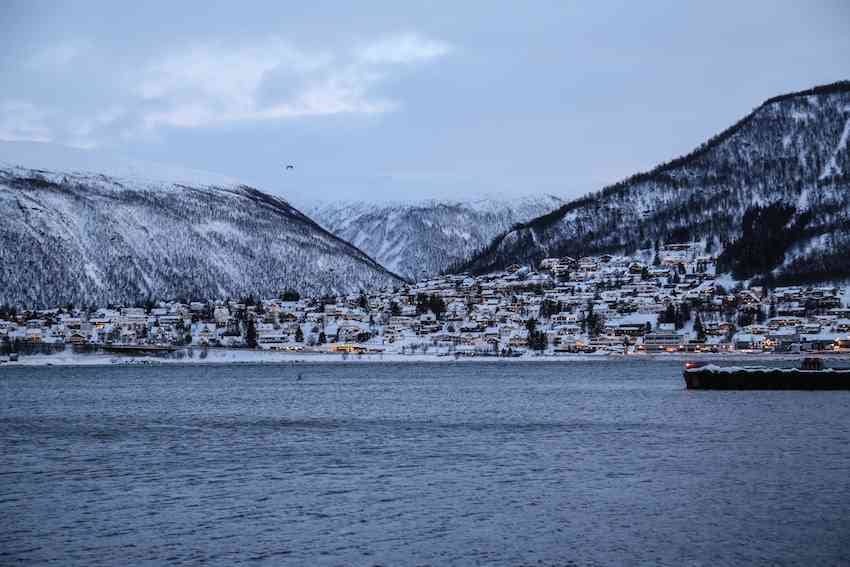
One reindeer herder, Jovsset Ánte Sara, who was ordered to reduce his reindeer herd from 350 to 75 by the end of 2018, appealed the order in a UN court.
Six years later, the UN agreed that Sara’s rights had been violated. But it was too late for his herd.
Many Sami herders like Sara don’t believe that humans should have such a level of control over the reindeer and nature in general. They believe the government sees reindeer husbandry as glorified imeat production, while many Sami see it as tending to a herd, allowing them to roam and graze in their winter and summer pastures, and minimally intervening in their lives, only when necessary.
Threats to Reindeer Husbandry and Sami Herders
Climate change is currently the biggest threat to reindeer husbandry. Warming temperatures in the winter months, even as far up as northern Norway, create problems for both wild reindeer and tame reindeer.
Usually, the Sami reindeer dig through the soft snow in their winter pastures to get to their food sources. However, with warmer climates and temperatures hovering around and above freezing for long periods, snow conditions deteriorate. The snow melts and freezes over and over again, making winter grazing almost impossible causing more reindeer to starve.
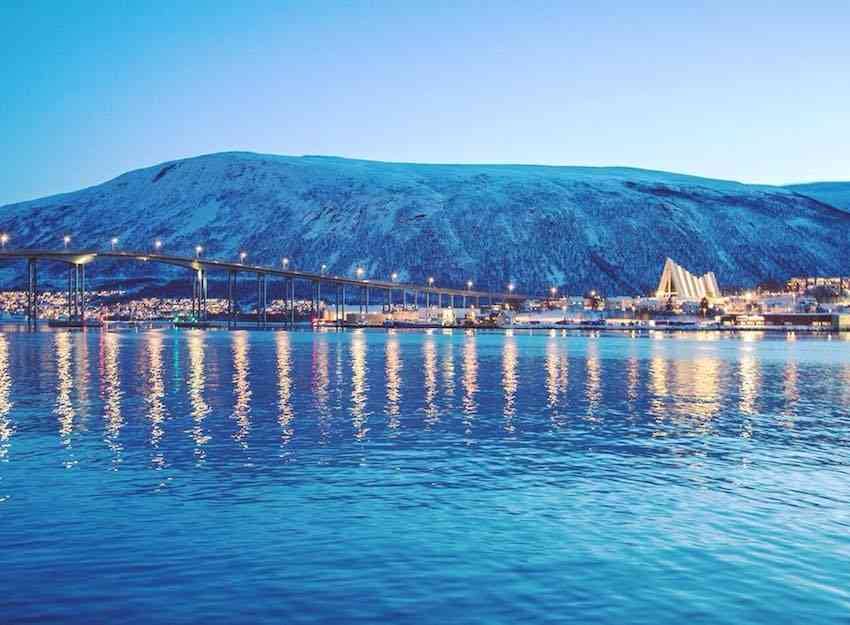
This has created problems in traditional reindeer herding, with more Norwegian reindeer starving and dying in record numbers during the winter. Though reindeer are still able to graze during the summer months – they actually graze so much to store up energy that they can sleep and graze at the same time – they still need something to eat during the winter.
My last day in Tromsø, just a few days before Christmas, the weather was a few degrees above freezing. Rain was falling all around me, creating dangerous conditions. I thought about what my Sami host had told me about how unthinkable this weather used to be for winter in Norway. And I could see how this would be a problem.
How Can You Visit a Reindeer Farm?
In the Tromso Arctic Reindeer experience, I got to visit a Sami reindeer camp and speak with a Sami host. You can go, help feed the reindeer, learn all about these incredible creatures, and also learn quite a bit about Sami village life from the Sami themselves.
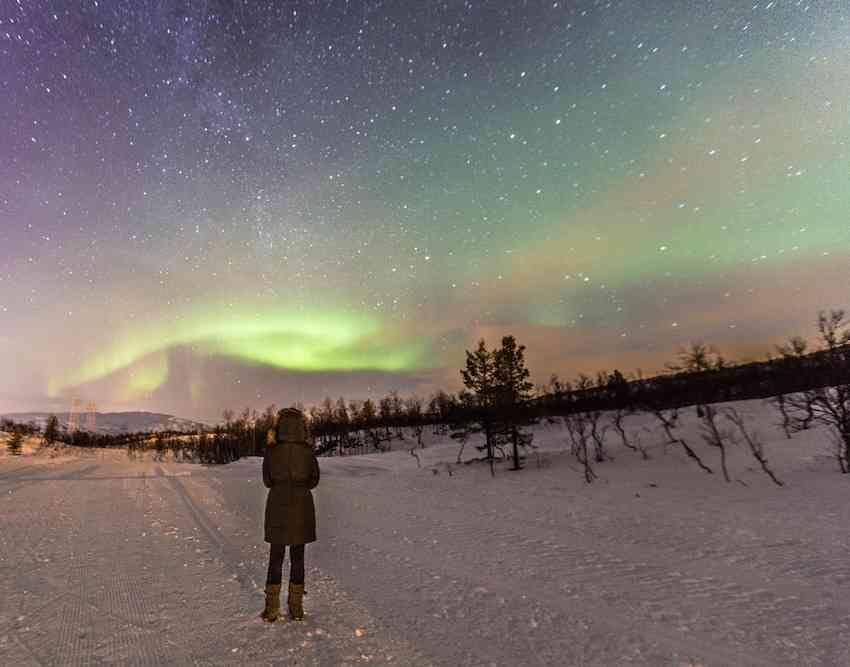
I also had delicious food while sitting around a cozy warm fire wrapped in blankets, which was a welcome reprieve from the snow-covered grounds and polar winter outside.
If you ever visit Tromsø or travel to another area close to a Sami village, I highly recommend trying to learn a little more about the Sami. Indigenous Sami also live in central and southern Norway, but most of these experiences are located in the north. Along with other cool winter experiences in Norway, like seeing the Northern Lights and going dog sledding! Check out some of these experiences below.
What did you know about the Sami? Would you want to meet a reindeer herder and interact with tame reindeer? Comment below!

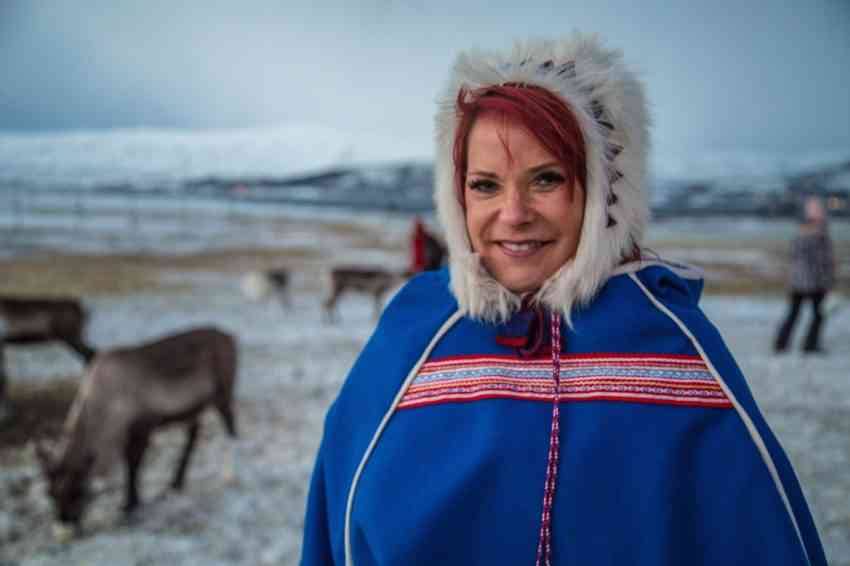

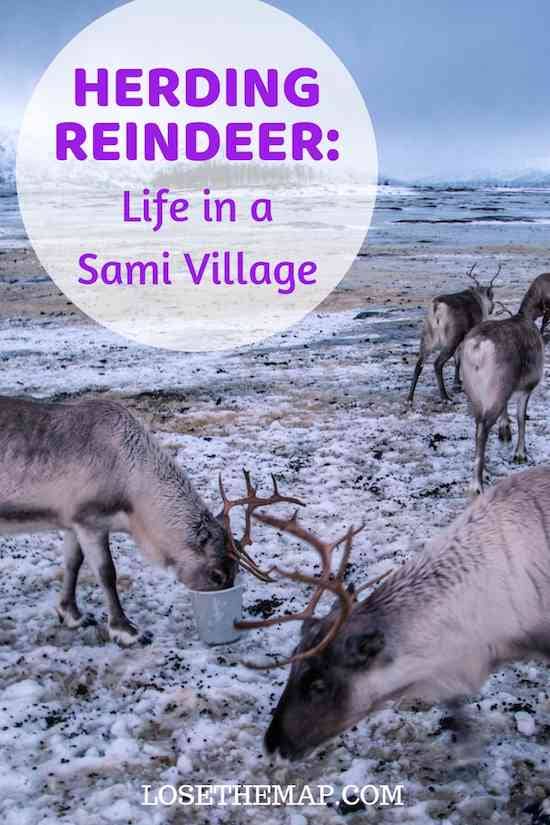
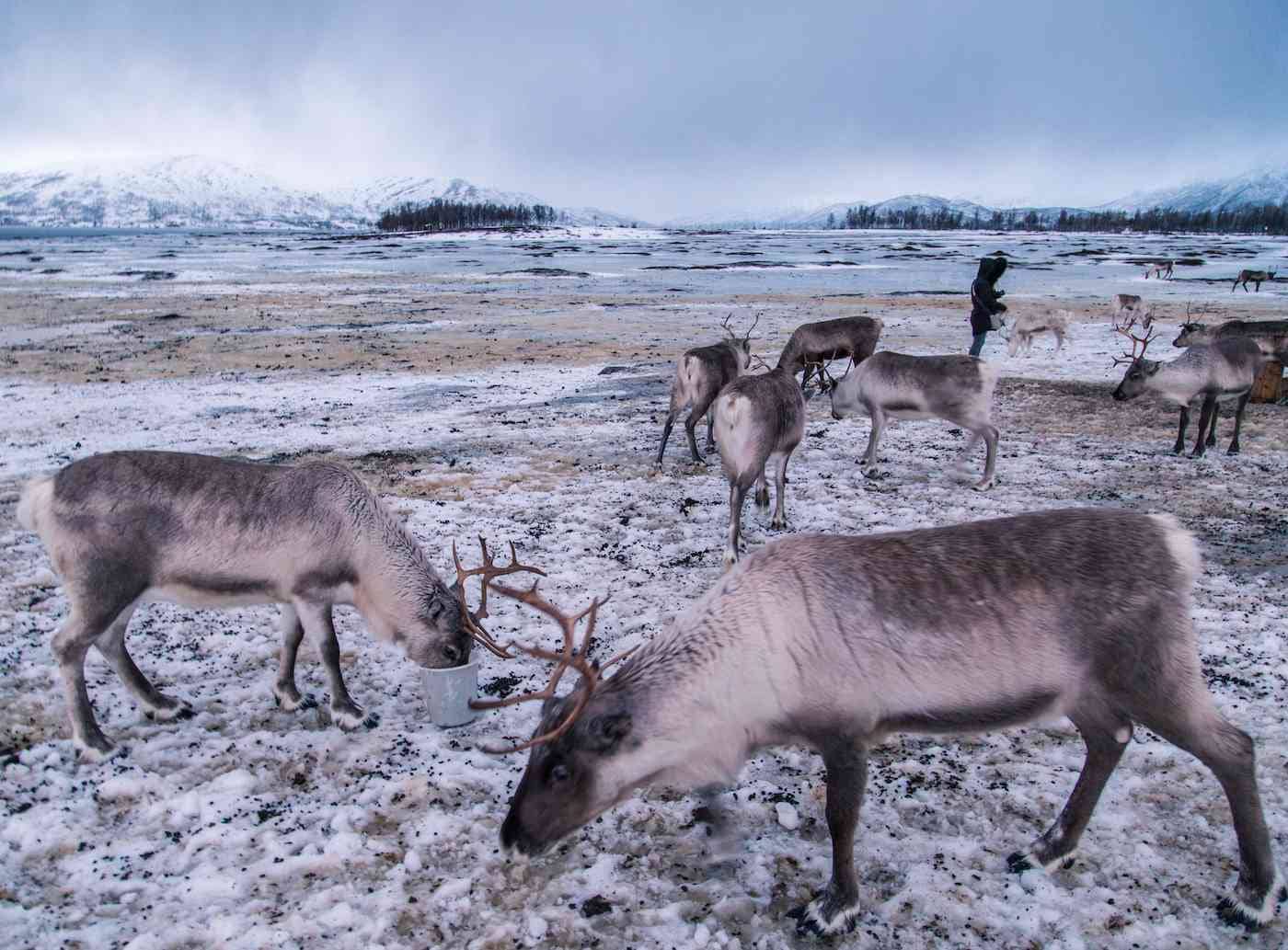
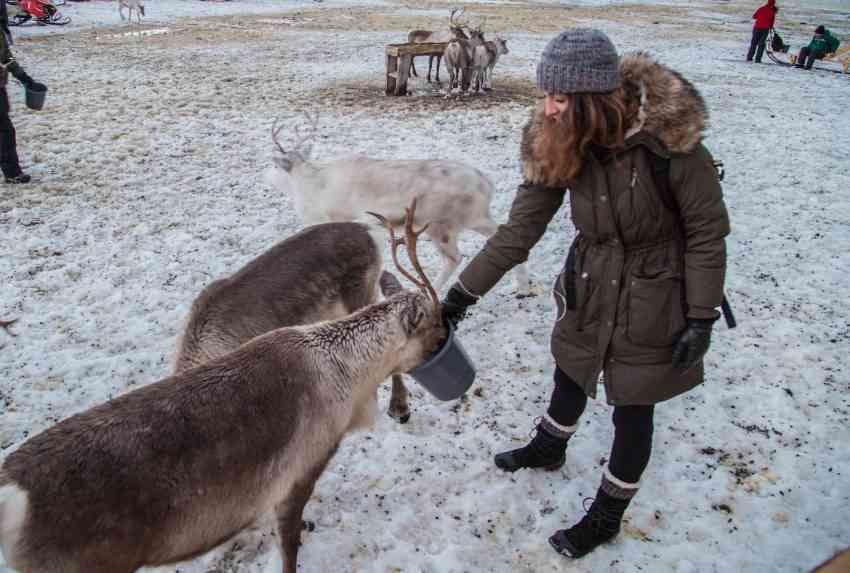
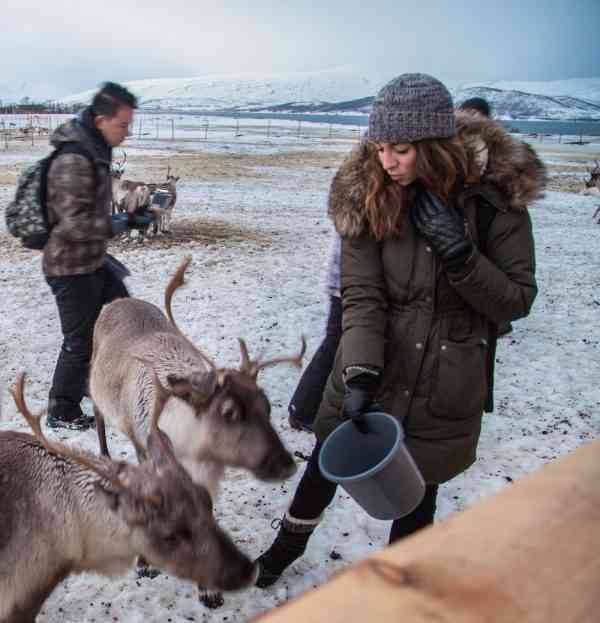
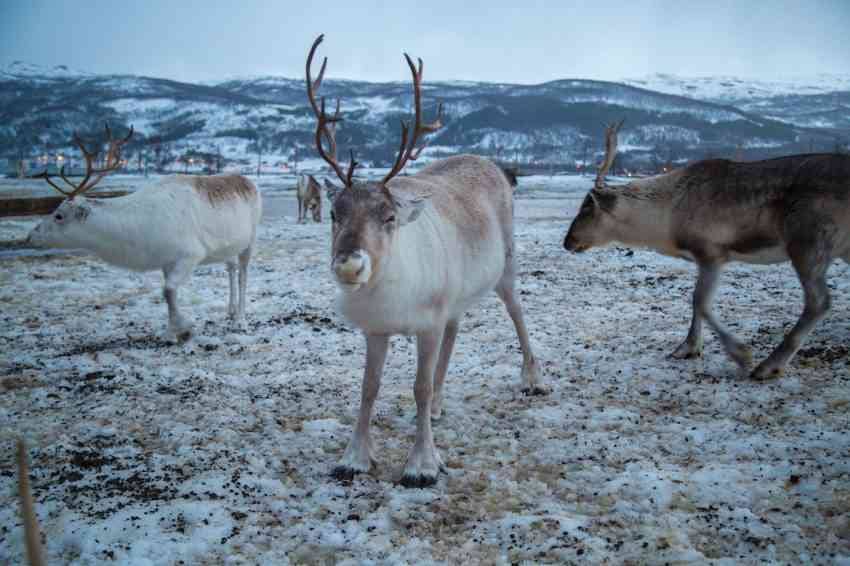
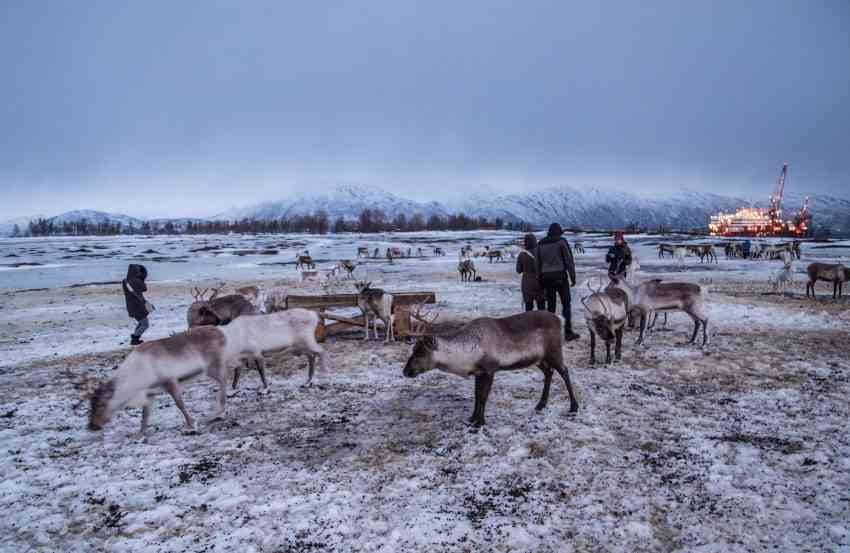
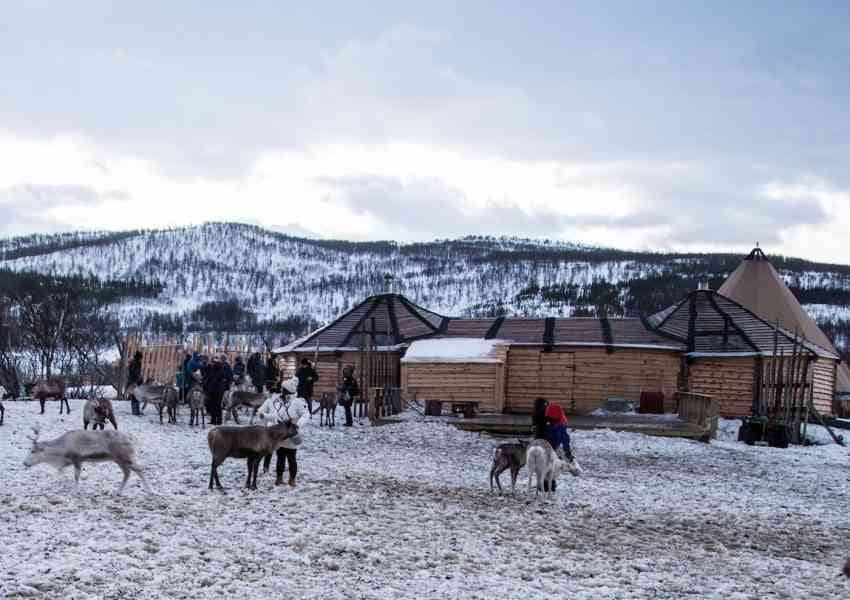
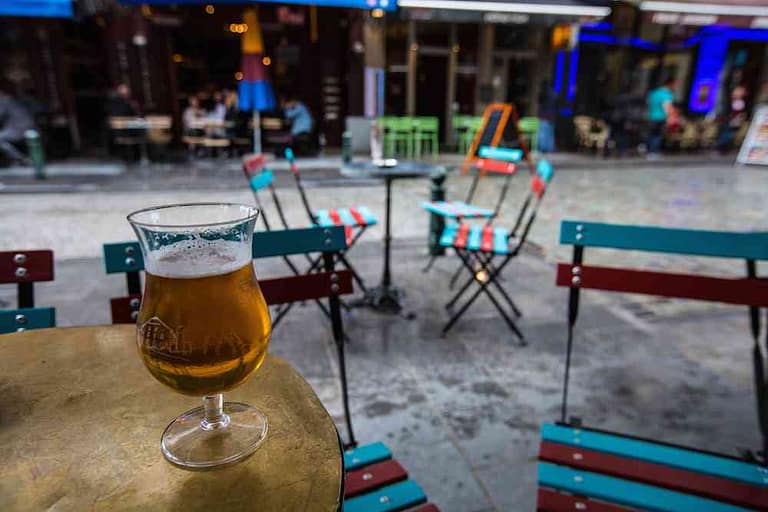
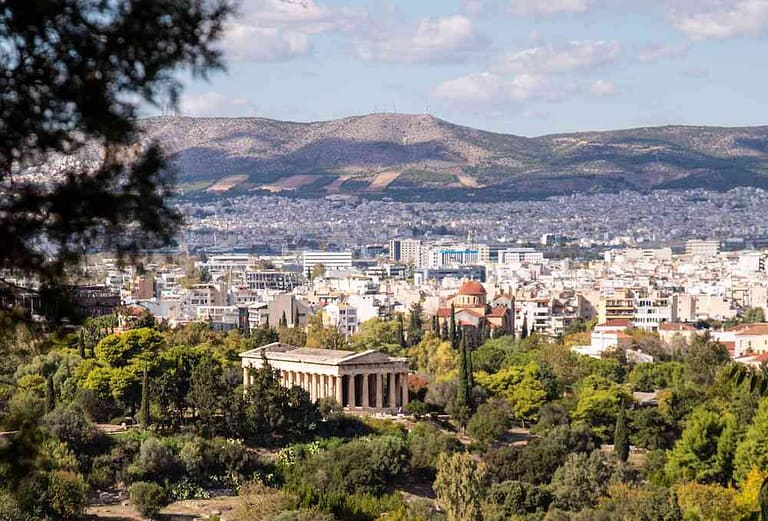
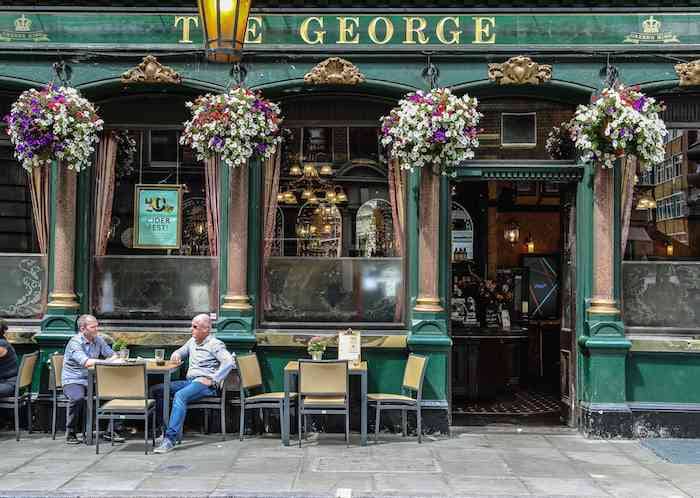
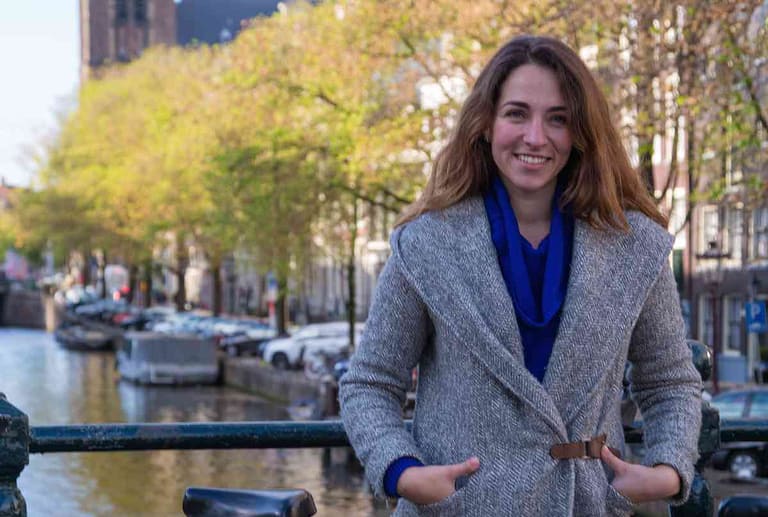
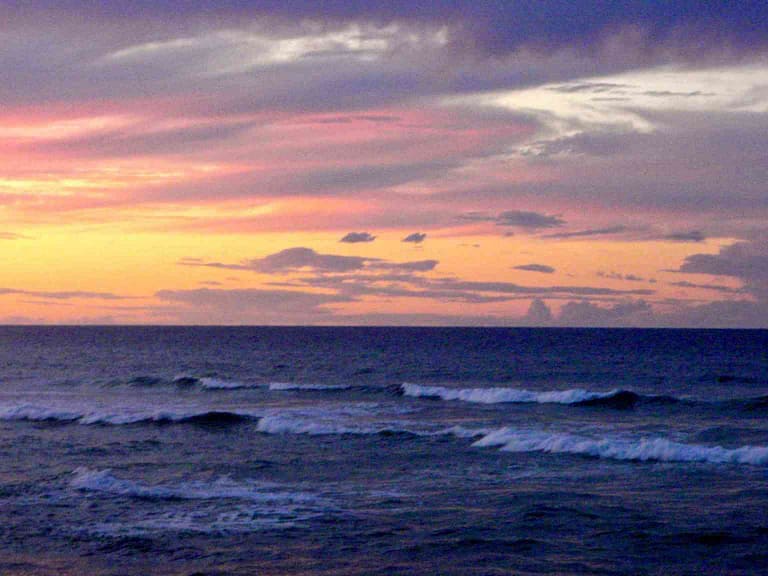
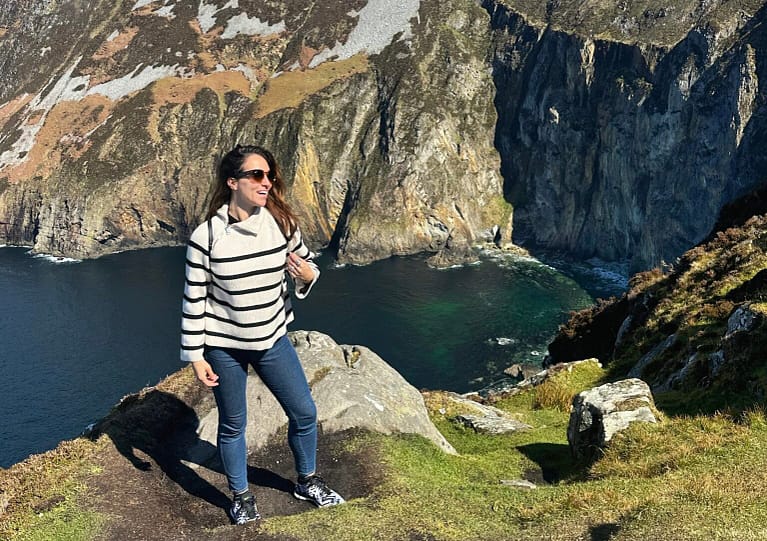
I never heard about the Sami’s involvement in WWII, but that is so interesting! I would love to experience their culture in person one day!
It was so interesting to hear about! Definitely do if you’re in northern Scandinavia, their traditions and history are fascinating.
such a nice post about sami village herding.The buildings of a traditional Sami reindeer farm l love this
The Sami people sound fascinating, especially with how they helped the effort during WWII. I’d love to visit and experience their culture.
Yes, I would definitely recommend it!